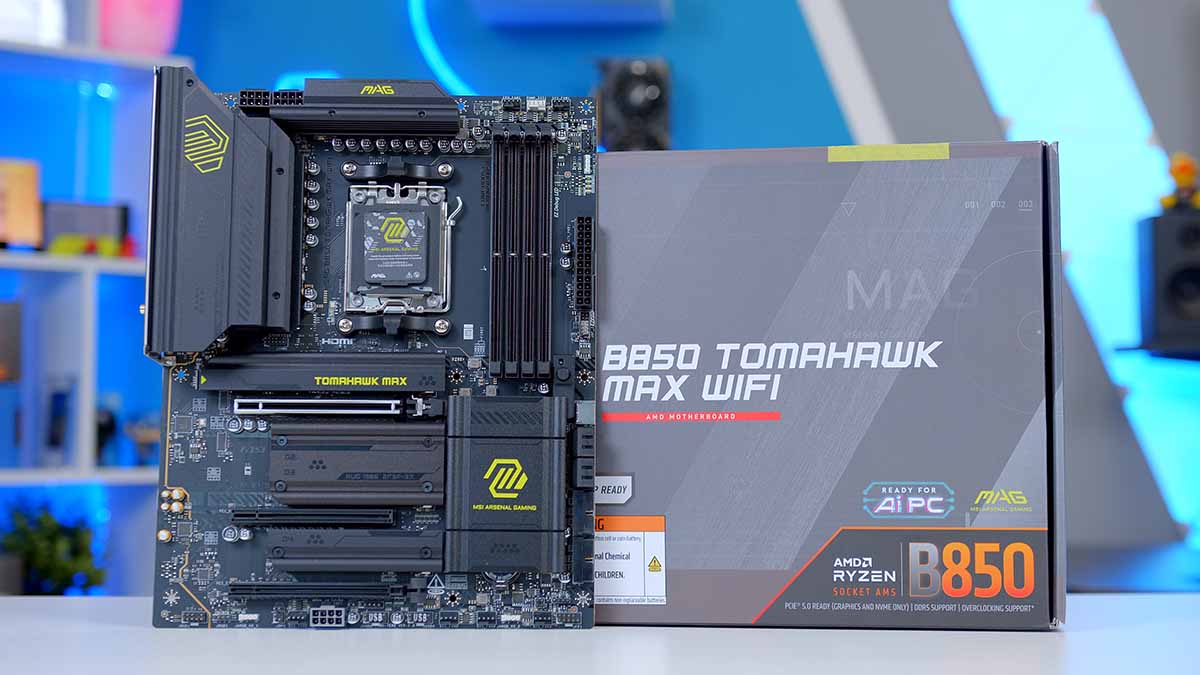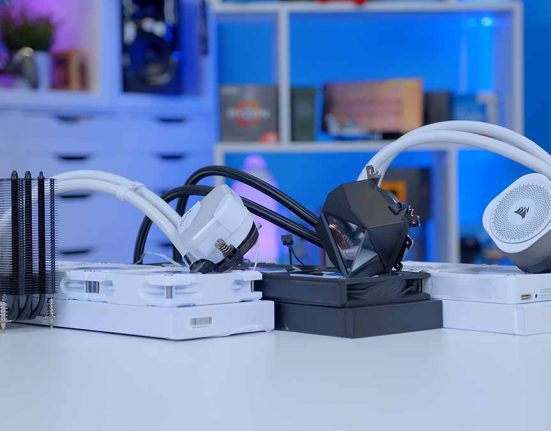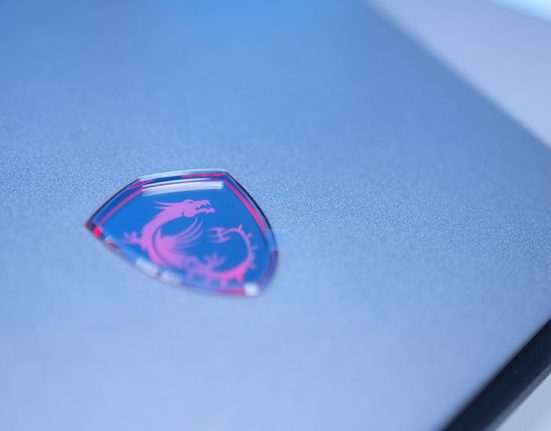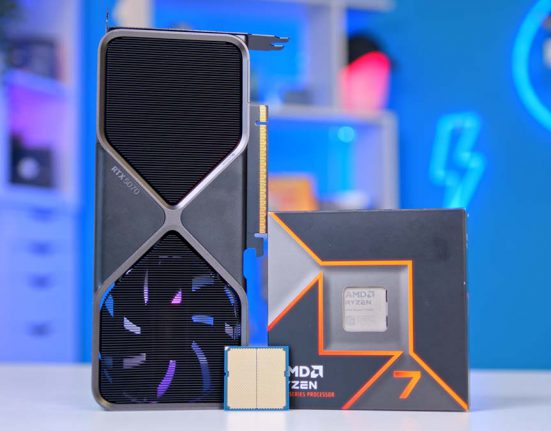The MSI MAG B850 TOMAHAWK MAX WiFi is an affordable motherboard for gamers looking to build a Ryzen 9000 PC. This board is DIY-friendly and offers a robust power solution for overclocking. It also offers a strong selection of IO, which provides a range of blazing-fast ports and high-speed networking. However, with so many other excellent B850 motherboards on the market, we’ve tested and analysed this board to see what kind of value proposition it offers compared to the alternatives.
The introduction of B850 motherboards on the market is a fairly exciting notion. B650 motherboards are among some of the top-selling options for AMD Ryzen builds. For this reason, we can expect the even more refined B850 chipset to be a unique selling point for these boards, making them a worthwhile pickup if you’re looking to make use of all the high-quality features.
In this motherboard review, we’ll take a look at the MSI MAG B850 TOMAHAWK MAX WiFi, with an analysis of its specs, box accessories, design, connectivity and expansion options to determine if this is a solid board for a Ryzen 9000 gaming PC.
Buy the MSI MAG B850 TOMAHAWK WiFi on:
Specification
Taking a look at the specs of the MSI MAG B850 TOMAHAWK MAX WiFi, this board has a bountiful set of features, connectivity and expansion options. Straight off the bat, the MAG B850 TOMAHAWK MAX WiFi supports a maximum of 256GB of DDR5 RAM clocked at 8400MT/s. If you can clock your RAM up to this speed, you’ll see some solid performance bonuses, albeit at the cost of stability.
Sticking to overclocking, this board offers a 14+2+1 VRM power phase design for the CPU. Ultimately, this isn’t as strong as X870 and X870E motherboards, but this is ample for a substantial overclock on your chosen Ryzen 9000 processor.

Moving down the specs table, builders have access to a decent set of expansion options. This board’s graphics card slot is Gen5, ready to house NVIDIA’s RTX 5000 graphics cards. For storage, the B850 TOMAHAWK MAX has four slots, two of which are Gen5 and the others Gen4. Overall, I think four slots is a decent selection, primarily as this board is targeted at the budget side of the market.
Moving onto IO, this board houses five front IO headers, two USB 2.0, two USB 3.2 Gen1 Type-A headers, and one USB 3.2 Gen2x2 Type-C header. It’s good to see the inclusion of an additional USB 3 header. Still, I feel an extra USB 2.0 header would benefit builders more, catering to those with plenty of fans or additional cooling accessories that require data input.
| Specification | MSI MAG B850 TOMAHAWK MAX WiFi |
|---|---|
| Form Factor | ATX |
| Supported Memory | 256GB DDR5 8400MT/s |
| PCI-E x16 Slots | 1 x PCI-E 5.0 |
| PCI-E x4 Slots | 2 x PCI-E 5.0 2 x PCI-E 4.0 |
| VRM Power Phases | 14+2+1 |
| Front IO | 2 x USB 2.0 2 x USB 3.2 Gen1 Type-A 1 x USB 3.2 Gen2x2 Type-C |
| Rear IO | 4 x USB 2.0 1 x USB 3.2 Gen1 Type-A 2 x USB 3.2 Gen2 Type-A 3 x USB 3.2 Gen2 Type-C |
| Audio | 1 x Optical S/PDIF 2 x Audio Jacks |
| Networking | 5 Gigabit LAN WiFi 7 |
The selection of rear IO is pretty strong. There are ten ports, four USB 2.0, one USB 3.2 Gen1 Type-A, and five USB 3.2 Gen2 ports. This is two less than the ASUS ROG Strix B850-F Gaming WiFi, which is comparably more expensive than this MSI option. For audio, MSI has provided two 3.5mm jacks alongside Optical S/PDIF. It’s nice to see an optical port, as this opens up options for those with speaker setups.
Regarding networking, we were impressed to see a 5 Gigabit LAN port and WiFi 7. While cheaper motherboards often cut certain features to reduce costs, MSI has gone the extra mile with the B850 TOMAHAWK MAX’s networking capabilities, which is fairly exciting.
What’s in the Box?
Manufacturers often include extras inside the motherboard box. These accessories usually alleviate the hassles of the building process and can save you some money, especially if there are specific cables you need. MSI provides a few gadgets worth highlighting, which we’ve discussed below.
The first accessory worth mentioning is the WiFi antenna. Since the introduction of WiFi 7, WiFi antennas now use a snap-in connector instead of screws. This antenna increases the range of your WiFi signal, which we recommend installing immediately.

Inside the motherboard box are a range of tool-less clips for M.2 drives. These clips simply allow M.2 SSDs to click into place, eliminating the need for a screwdriver. MSI also includes a key for removing these from the board.

The MAG B850 TOMAHAWK MAX board also includes a few extra cables. The 1-3 EZ Conn-Cable is used for the MSI ‘JAF’ header, which can be found on certain boards. This cable combines RGB and PWM fan control, freeing up header space. Additionally, there’s an EZ Front Panel cable, which streamlines cable management for JFP1 power. This is particularly handy if you’re unfamiliar with plugging in individual pins for JFP1.
MSI MAG B850 TOMAHAWK MAX WiFi Design
Like MSI’s other TOMAHAWK motherboards, the MAG B850 TOMAHAWK MAX WiFi is a fairly simplistic but sleek-looking motherboard. The TOMAHAWK MAX branding is primarily black, with green logos and livery. The entire motherboard, down to the PCB, is black, with a few splashes of almost neon green on some heatsinks.
I’m a fan of the green. It adds a nice contrast to what would otherwise be a fairly bland-looking motherboard, making it stand out in the sea of black components on the market.

Chunky metal heatsinks cover a fair amount of the PCB. The rear IO and VRM heatsinks hide much of the top half of the board, while the M.2 heatsinks provide some coverage on the bottom half.
MSI has kept lighting simple. The MAG B850 TOMAHAWK MAX WiFi doesn’t feature RGB strips or LEDs. However, there are plenty of headers for plugging in RGB components, so those looking to light up their build like a disco will have no problem.

It’s a bit of a shame that there are only a couple of tool-less features on this motherboard. The heatsinks for slots two, three, and four are covered by heatsinks that are screwed in. This won’t be a deal-breaker for everyone, but it would have been nice to see more of a focus on usability, especially because the overall feature set has been reduced compared to an X870 and X870E motherboard.
However, I like the overall design. The primarily black aesthetic easily blends in with the large number of black components on the market. By keeping things simple, this motherboard is versatile when picking out a particular style.
Connectivity Options
Graphics Card Slots
Moving onto expansion, the MSI MAG B850 TOMAHAWK MAX WiFi features one x16 slot for graphics cards, the topmost slot. This slot is PCI-E 5.0 compatible, so those looking to pick up an RTX 5000 GPU will have no issues installing it into this motherboard. The two other PCI-E slots on this board run at x4 and x1 speeds, so they won’t be suitable for a dual graphics card setup.

At the bottom of the MAG B850 TOMAHAWK MAX WiFi, you’ll find an additional 8-pin PCI-E power connector. These are common on Z890 motherboards, providing extra power for the GPU slots. If you plan on pushing your system with intense workloads, you’ll likely need to plug this in.

M.2 Slots
The MSI MAG B850 TOMAHAWK MAX WiFi offers four SSD slots for builders to utilise. The top two are Gen5, while the bottom two are Gen4. It’s great to see multiple PCI-E 5.0 slots on a cheaper motherboard, but we’re also happy to see four slots instead of three. It’s fairly common for manufacturers to sacrifice these slots to bring down costs, but the four slots on this board offer plenty of value.

RAM DIMMs
With the arrival of Ryzen 9000 CPUs, DDR5 RAM can reach new speeds compared to those we saw on the B650 chipset. This allows boards like the MAG B850 TOMAHAWK MAX WiFi to reach exceptional heights.

This board’s RAM configuration allows builders to install four DIMMs up to 256GB, which is 64GB per stick of RAM. The RAM can also be overclocked to 8400MT/s, providing a performance boost at the cost of stability.
Rear IO
The rear IO on the MSI MAG B850 TOMAHAWK MAX WiFi is decent overall. There are ten USB ports: four USB 2.0, five USB 3.2 Gen2, and one USB 3.2 Gen1 port. This ample selection caters to those with many peripherals and external USB devices.

For networking, you’ve got the choice of 5 Gigabit LAN, which is impressive, and WiFi 7. Both are incredibly fast and more than suitable for lag-free gaming. I feel the audio options could be better. While there is an optical S/PDIF port, the audio jacks are basic and will be restrictive for those with more complex audio setups.
Internal Headers
CPU and Motherboard Power
As expected, this motherboard’s power configuration is pretty standard. On the right-hand side of the MAG B850 TOMAHAWK MAX WiFi is the 24-pin motherboard power header. Due to its size, this header is required to power your board and is easy to plug in.

The CPU power is at the top left. The MAG B850 TOMAHAWK MAX WiFi has two 8-pin EPS CPU headers instead of one. This is due to overclocking support. More headers result in better power distribution and an improved ability to handle higher clock speeds.

Front USB Headers
This board offers five headers regarding the front USB ports: two USB 2.0, two USB 3.2 Gen1 Type-A, and one USB 3.2 Gen2x2 Type-C. Overall, this is a decent set of front USB headers. I’m surprised that MSI has included an additional USB 3.2 Gen1 header instead of USB 2.0, but this is a solid value-add regardless.

Pump and Fan Headers
The MSI MAG B850 TOMAHAWK MAX WiFi features many fan and pump headers. At the top-right of the PCB are ‘CPU_Opt’, ‘CPU_Fan’, and ‘Sys_Fan1’. It’s great that these headers are grouped together, as most builders will likely use them because they’re the easiest to access through the rear of a case.

The rest of the headers on this motherboard are relatively dispersed. Underneath the motherboard power is the JAF header, which doubles as RGB and fan control. It is worth using if you have a supporting cooler or set of fans.
There are four more Sys_Fan headers at the bottom of the motherboard, for a total of eight if you include the JAF header. This is more than enough for the vast majority of prospective buyers and provides some expansion options for those looking to add more cooling later on.

RGB Headers
RGB support on this motherboard is reasonably basic. Most motherboards have around three in total, with more expensive options offering four and sometimes even five. Unfortunately, the MAG B850 TOMAHAWK MAX WiFi only has three, one at the top right and two at the bottom of the PCB. Ultimately, we’d recommend using a splitter if you’ve got several RGB components to plug in.

Building with the MSI MAG B850 TOMAHAWK MAX WiFi
Modern motherboards are incredibly easy to build with. Even boards like the MAG B850 TOMAHAWK MAX WiFi, which has plenty of chunky heatsinks, don’t pose much of an issue during the building process. From start to finish, this board provided a solid PC-building experience.
Including a few tool-less features, such as the primary SSD heatsink latch and the EZ M.2 clip, makes installing a drive very straightforward. This also applies to the graphics card, which uses a button to open and close the latch to secure it in place. Beyond the connectivity and expansion options, we’d love to see more of these features, as they minimise hassle when building a PC, catering to everyone, but first-time builders especially.
Features We Like
High-Speed Networking
One of the significant advantages of the MAG B850 TOMAHAWK MAX WiFi is its blazing-fast networking support. The rear IO features 5 Gigabit LAN and WiFi 7, ideal for those with a speedy home network. It’s rare to see 5 Gigabit LAN on a motherboard at this price point, which is even more impressive.

Sleek Design
Although this isn’t necessarily a feature, I think the aesthetic of this motherboard is particularly noteworthy. I’m a big fan of black with contrasting green, as it makes the heatsinks and the PCB stand out compared to motherboards that are entirely blacked out. Additionally, it’s not unsurprising to see manufacturers make sacrifices to the design to bring down costs. However, MSI has retained a sophisticated design on the MAG B850 TOMAHAWK MAX WiFi, for which we’re grateful.

Features We Don’t Like
Limited Audio Selection
This board features two 3.5mm jacks and an Optical S/PDIF port for audio options. While S/PDIF is a solid addition, the rest of the audio ports on this motherboard are restrictive. Those with a more complex audio setup with speakers or interfaces may want to consider alternative motherboards with better audio designs.

SSD Slots Aren’t Fully Tool-Less
Unfortunately, one of the qualities I’m not a fan of is that the SSD heatsinks aren’t tool-less. MSI offers heatsinks held in by latches on its X870 and Z890 motherboards, so this isn’t entirely uncommon. This won’t be a deal-breaker for everyone, but I feel the screwed-in heatsinks cheapen the value of this motherboard to a degree.

Conclusion
MSI MAG B850 TOMAHAWK MAX WiFi
Product Name: MAG B850 TOMAHAWK MAX WiFi
Brand: MSI
-
Features
-
Design
-
Performance
-
Value For Money
Summary
The MSI MAG B850 TOMAHAWK MAX WiFi is a competitively priced motherboard with great features. One significant issue with X870 motherboards is that the vast majority are unaffordable for most prospective buyers. Those looking to build a Ryzen 5 or Ryzen 7 motherboard don’t necessarily need all of the top-end features of the X870 chipset, which is why B850 motherboards (much like B650 boards) are incredibly strong.
The MSI MAG B850 TOMAHAWK MAX WiFi, in particular, offers solid expansion options and bountiful connectivity, including high-speed networking in the form of 5 Gigabit LAN and WiFi 7. Additionally, this board features a sleek black aesthetic, which is great for those building a darker-themed PC. My only qualm with this motherboard is its lack of tool-less features. There are a couple on this board, such as the primary SSD and GPU slots; otherwise, it is fairly lacking. Adding a few more would greatly contribute to the user experience, further increasing the MAG B850 TOMAHAWK MAX WiFi’s value proposition.
Pros
✅ Fast networking selection
✅ Sophisticated aesthetic
✅ Competitive pricing
Cons
❌ Weak audio options
❌ Not fully tool-less
❌ No RGB lighting






![FI_[DM78] Corsair Air 5400 + 5090 Gaming PC Build](https://geekawhat.com/wp-content/uploads/2025/11/FI_DM78-Corsair-Air-5400-5090-Gaming-PC-Build-551x431.jpg)

